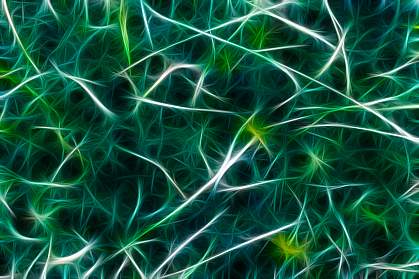You are here
September 25, 2018
Exercise and new nerve cell growth in Alzheimer’s disease
At a Glance
- In a mouse model of Alzheimer’s disease, exercise stimulated the growth of new nerve cells in the brain and reduced memory problems.
- The researchers were able to design treatments to mimic some of the beneficial effects of exercise.
- The findings pave the way for studies in people with Alzheimer’s disease.

Experts estimate that more than 5 million Americans may have Alzheimer’s disease, the most common form of dementia. This irreversible brain disorder gradually worsens and destroys memory and thinking skills. Current treatments may slow memory loss, but there’s no cure. There is some evidence that exercise can reduce the risk of cognitive decline during aging and decrease the risk of dementia, but studies with people have had mixed results.
Many changes take place during the course of Alzheimer’s disease, even before symptoms develop. Starting in the hippocampus region of the brain, abnormal deposits of proteins form amyloid plaques and tau tangles. Neurons (nerve cells) there stop functioning, lose their connections with other neurons, and die. Previous research with mice has suggested that there’s also a disruption in neurogenesis, the process of new neurons arising from progenitor cells, in the hippocampus.
A research team led by Dr. Rudolph Tanzi of Massachusetts General Hospital and Harvard Medical School set out to investigate whether spurring growth of new hippocampus neurons could lessen memory problems in a mouse model of Alzheimer’s disease. The work was funded in part by NIH’s National Institute on Aging (NIA) and National Institute of Mental Health (NIMH). Results were published in Science on September 7, 2018.
The researchers used mice engineered to develop an early, aggressive form of Alzheimer’s disease. The mice were injected with a compound known to boost survival of progenitor cells as well as a gene therapy that enhances proliferation of progenitor cells. The two treatments promoted the growth of nerve cells in the mice. However, the mice weren’t any better at a maze that tests memory.
The team also tested the effects of exercise. Untreated mice given access to an exercise wheel had new growth of nerve cells and performed better on memory tests. In addition, plaques and several proteins linked to Alzheimer’s disease, such as brain-derived neurotrophic factor (BDNF), improved in these mice.
Next, the research team tested the effects of combining the progenitor cell treatments with BDNF promotion. This combination, like exercise, promoted nerve cell growth and improved memory. It had these effects, however, without affecting plaques and other disease markers.
Blocking new growth of nerve cells in the hippocampus by various methods, in contrast, worsened memory and reduced BDNF. This finding suggests that the absence of new hippocampal neurons may play a role in Alzheimer’s disease.
“The lesson learned was that it is not enough just to turn on the birth of new nerve cells, you must simultaneously ‘clean up’ the neighborhood in which they are being born to make sure the new cells survive and thrive,” Tanzi says. “Exercise can achieve that, but we found ways of mimicking those beneficial cognitive effects by the application of drugs and gene therapy that simultaneously turn on neurogenesis and BDNF production.”
More research is needed to determine whether these findings extend beyond this mouse model of Alzheimer’s disease. If they prove relevant to human disease, they may lead to new ways to prevent or treat dementia.
—by Geri Piazza
Related Links
- Compound Repairs Features of Alzheimer’s Disease in Mice
- Drug Improves Alzheimer’s-like Condition in Mice
- Clues to Alzheimer’s Disease
- Mediterranean Diet May Slow Development of Alzheimer’s disease
- Dealing with Dementia
- Alzheimer's Disease & Related Dementias
References: Combined adult neurogenesis and BDNF mimic exercise effects on cognition in an Alzheimer's mouse model. Choi SH, Bylykbashi E, Chatila ZK, Lee SW, Pulli B, Clemenson GD, Kim E, Rompala A, Oram MK, Asselin C, Aronson J, Zhang C, Miller SJ, Lesinski A, Chen JW, Kim DY, van Praag H, Spiegelman BM, Gage FH, Tanzi RE. Science. 2018 Sep 7;361(6406). pii: eaan8821. doi: 10.1126/science.aan8821. PMID: 30190379.
Funding: NIH’s National Institute on Aging (NIA) and National Institute of Mental Health (NIMH); Cure Alzheimer’s Fund; JPB Foundation; Henry and Allison McCance Center for Brain Health at Massachusetts General Hospital; Mathers Foundation; and Leona M. and Harry B. Helmsley Charitable Trust.
